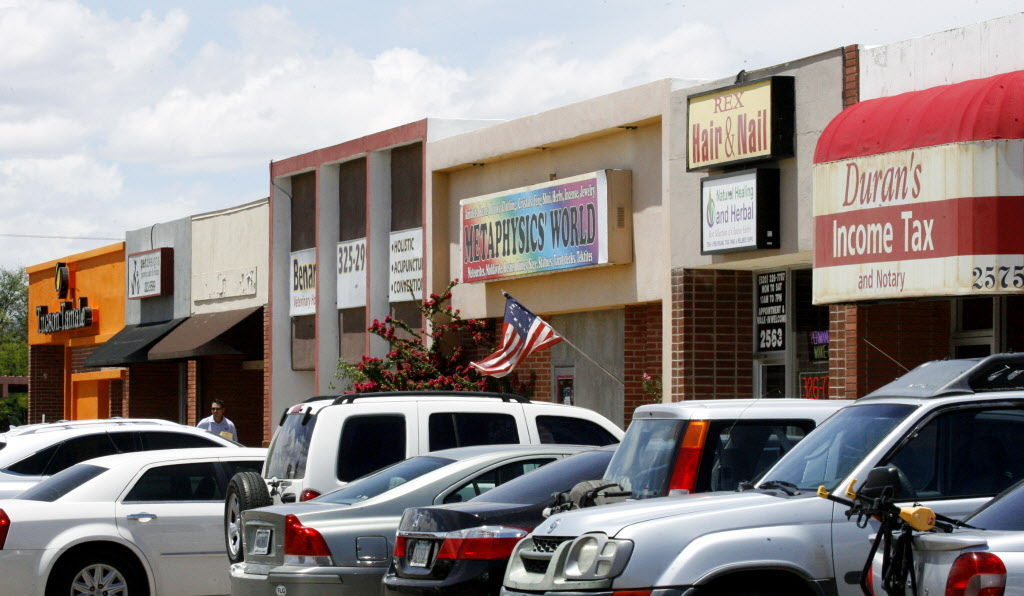After two years of planning and sometimes fiery negotiations between neighborhoods and businesses, the Broadway project is moving into the design phase.
The project to widen Broadway between Country Club Road and Euclid Avenue is part of the Regional Transportation Authority plan, which voters approved in 2006.
On Tuesday the Tucson City Council approved an alignment concept, which allows the project’s design phase to begin.
The project design will take into account guidelines developed by a citizens committee during a lengthy process. The guidelines call for minimizing building acquisitions and demolitions and trying to save business access and business parking.
The goal is a “safe, attractive and economically viable corridor,” Assistant City Manager Albert Elias told the council.
The baseline alignment is a starting point, and the actual alignment could change once the city talks to property owners and figures out what’s doable, said Mayor Jonathan Rothschild.
“What’s important — what we’ve heard from everybody at this point, and rightfully so — is that we’ve got to get going,” he said. “We’ve got to get moving.”
Over the summer, the city staff will work to understand the options for business access and parking, and how city-owned properties could help solve problems by turning those lots into public parking or shared parking, said Nicole Ewing Gavin, director of the city’s Office of Integrated Planning.
“Property owner preferences play a big role here,” she said. “If a property owner wants to stay, we’re going to employ as much flexibility as we can to try to keep them there. If a property owner is ready to be bought and wants to move on, and we’re taking their parking, we’ll likely be required to buy them.”
While some businesses told the City Council they’re pleased something is happening after years of fretting, others said the alignment will hurt businesses by eliminating parking.
For years businesses were told only buildings on the north side of the street would be affected, but the approved plan takes properties on both sides, said property owner Greg Clark.
“There’s a lot of ways to skin a cat, but I think the worst way is to skin half of two cats,” he told the council.
Dedicated bus lanes were eliminated from the plan, a change that was approved by the RTA governing board.
Traffic modeling shows the approved alignment will meet the RTA’s functionality requirements and allow sufficient space for dedicated transit “in the future, when the time is right,” said Mary Durham-Pflibsen, chairwoman of the citizens task force.
The $71 million to pay for the project comes mainly from the Regional Transit Authority and Pima County bonds. The city’s share is $3 million.
Tuesday’s vote allows the city to access up to $1.5 million in design funds from the RTA. The city already has spent $1 million in RTA funds on planning and part of a $5 million RTA fund for property acquisition.





